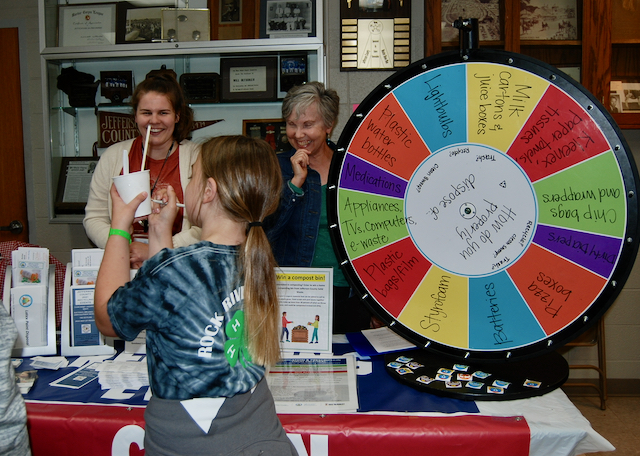By Anita Martin
The abundance of some things is nice, others, not so much.
The last few weeks, the prevalence of this particular entity has been ticking off a lot of people here in Jefferson County—and pets, too.
What’s the deal with the seemingly unusually high number of ticks which folks have been finding on their four-legged friends lately?
In a 36-hour period recently, we surprisingly found a total of 12 ticks on our two dogs—11 of these after walking one afternoon on the bike trail for about an hour. Never before in the 22 years we’ve had dogs have we ever seen this number of ticks in a 12-month period. In fact, this is about double the number we discover in a typical year.
Recently, a friend’s husband was bitten by a tick, and the bite subsequently became infected requiring urgent medical treatment. They found six ticks on him that day, presumably acquired walking through their yard.
What are local veterinarians currently experiencing when it comes to ticks in their patients? Dr. Chris Gensler, DVM and owner of Tyranena Veterinary Clinic in Lake Mills, said while tick populations do fluctuate from year to year, they have been getting a lot more calls from folks lately and are seeing more evidence of ticks at exam times.
It’s hard to say whether pet owners are actually finding more ticks than usual, Dr. Gensler said, or is it that people have been out and about more, and therefore running into ticks as a result.
Ticks start feeding when the temperature reaches 30 degrees or more; as a result, this year, folks were finding ticks at the end of February or the beginning of March. They become more active as the weather becomes warmer, tend to congregate at the edge of tall and short grass, and frequent pathways where wood interfaces grassy areas, such as bike trails and park trails.
Dr. Gensler stresses the importance of protecting pets against fleas and ticks. In terms of helping prevent tick-borne Lyme disease, he sees a slight advantage using an oral tick medicine over using a topical treatment for dogs.
Over the last 15 years, the number of cases of human Lyme disease reported to Wisconsin DHS has more than doubled.
Three non-Lyme diseases ticks can carry include anaplasmoisis, babesiosis, and ehrlichiosis. According to epidemiologist Dr. Daniel Cameron, M.D., cases of Babesia have increased more than 25-fold between 2001 and 2015 in Wisconsin. Dr. Cameron is a nationally-recognized leader in diagnosing and treating Lyme disease and other tick-borne illnesses. (For more information, see https://danielcameronmd.com/babesia-cases-skyrocket-wisconsin-26-fold-increase/.)
Experts believe milder winters are significant contributors to higher tick populations and increased tick-related diseases. Some researchers have also pointed to the prevalence of invasive buckthorn as a factor which may encourage tick population increases. Others say greater snow depths during winter could serve to enhance tick survival. (See https://www.wisconsin.edu/all-in-wisconsin/story/uptick-uw-stevens-point-researchers-use-dna-to-link-lyme-disease-infected-ticks/.)
As I learned more about this topic, I began asking myself whether a disturbance or change in the ecosystem could possibly be contributing to an increase in the tick population. Namely, the current circulating variants of the H5N1 avian influenza virus, which are impacting countless species and numbers of wild birds in the U.S., as well as mammals such as badgers, bears, ferrets, foxes, martens, minks, possums, raccoons, skunks, and weasels — all of which make Jefferson County home (including a recently seen black bear in Lake Mills.)
Among articles I’ve read, one suggests that when there’s lower biodiversity and more reservoirs, ticks will have more bacteria and more human infections will result. (A graphic found here offers information about a few of the animals mentioned above: https://sitn.hms.harvard.edu/flash/2022/biodiversity-loss-can-increase-the-spread-of-zoonotic-diseases.)
I found this article thought-provoking as well: https://www.wiscontext.org/what-does-passenger-pigeon-have-do-lyme-disease.)
As we switch from theory to practicality, how can we reduce our risks of developing tick-borne illness? Though it may sound a little obvious, some common sense steps bear reminder. They include tucking your pant legs into your socks to prevent ticks from crawling where they don’t belong.
For more tips, visit the following links: https://www.consumerreports.org/pest-control/tickproof-your-yard-without-spraying-a2432924927/, https://www.cdc.gov/ticks/avoid/on_people.html, and https://www.cdc.gov/lyme/prev/in_the_yard.html.
Anita Martin is a longtime freelance journalist whose work has appeared in such publications as the Waterloo/Marshall Courier, The Madison Times, Agri-View, Dane County Lifestyles (formerly 50 Plus Lifestyles newsmagazine), Verona Press and Wisconsin Woman magazine, covering such topics as health and wellness, and women’s and multicultural issues. More recently, she has developed an interest in such topics as environmental issues, avian influenza and other zoonotic diseases, and public health.

Anita Martin, at right, volunteers in 2021 at the Jefferson County Clean Sweep booth at the Jefferson County Fair. File photo/Kim McDarison.
This post has already been read 2689 times!